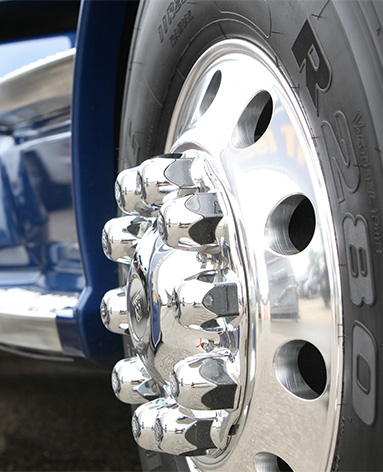Nov . 24, 2024 14:48 Back to list
brake drum measurement
Understanding Brake Drum Measurement A Comprehensive Guide
Brake systems are pivotal in ensuring that vehicles operate safely on the road. Among the various components that contribute to a vehicle's braking efficiency, the brake drum stands out as a crucial part, particularly in drum brake systems. Understanding how to measure brake drums accurately is essential for maintenance and replacement to ensure optimal performance and safety.
What is a Brake Drum?
A brake drum is a cylindrical component attached to the vehicle’s wheel hub. When the brakes are applied, brake shoes press against the inner surface of the drum to create friction, slowing down or stopping the vehicle. The performance of this system can dramatically influence the vehicle’s stopping power, making it crucial to monitor the condition of the brake drum regularly.
Why Measure Brake Drums?
Measuring brake drums is vital for several reasons
1. Safety Worn or damaged brake drums can significantly increase stopping distances, posing serious risks to the driver and others on the road. Regular measurement helps in identifying excessive wear or deformation.
2. Performance Properly measured and calibrated brake drums ensure optimal braking performance. If the drums are out of specification, it can lead to uneven wear of brake shoes, compromised braking efficiency, and increased maintenance costs.
3. Regulations Many jurisdictions have safety regulations that require regular inspection and maintenance of braking systems. Accurate measurement of brake drums is a key part of compliance.
How to Measure Brake Drums
Measuring brake drums involves a few key steps and requires specific tools to ensure precision
brake drum measurement

1. Gathering Tools To measure brake drums accurately, you will need a pair of calipers or a micrometer, and a brake drum gauge specifically designed for such measurements.
2. Cleaning Before taking measurements, clean the brake drum's surface with a wire brush to remove any dust or debris. This step is crucial as contaminants can influence your readings.
3. Taking Measurements - Diameter Measurement Use the calipers or micrometer to measure the diameter of the brake drum at several points. This helps to identify uneven wear, which can lead to pulsation and vibrations during braking. - Thickness Measurement The brake drum must also be measured at its thinnest point to ensure it meets the manufacturer’s minimum thickness specifications. Drums that are too thin are at risk of cracking or failing.
4. Checking for Deformation After measuring the diameter and thickness, examine the drums for any visible signs of deformation or cracks. An irregular surface may indicate that the drum needs resurfacing or replacement.
5. Consulting Manufacturer Specifications Each vehicle manufacturer provides specific measurements and tolerances for their brake drums. Always refer to the service manual for the exact specifications for the vehicle being serviced.
When to Replace Brake Drums
While regular measurements can prolong the life of brake drums, there will come a time when replacement is necessary. Signs that indicate a need for replacement include
- Significant cracks or severe wear beyond the acceptable limits set by the manufacturer. - An audible grinding noise when the brakes are applied. - Increased vibration or pulsation through the brake pedal, indicating imbalanced or warped drums.
Conclusion
In conclusion, mastering the art of brake drum measurement is essential for anyone involved in vehicle maintenance. Regular measurements help ensure safety, maintain performance, and adhere to regulatory standards. By following proper measurement techniques and monitoring the condition of brake drums, you can help guarantee that your vehicle operates safely and efficiently. Remember, when in doubt, consulting a professional mechanic can provide valuable insights and ensures that your brake systems are in peak condition for safe driving.
-
HINO Industrial Efficiency-Jiangsu Hino Industrial|Productivity Optimization&Cost Reduction
NewsJul.12,2025
-
HINO-¡Ң���ຽ��е��������˾|Advanced Industrial Solutions&Energy Efficiency
NewsJul.12,2025
-
Premium Brake Drum Iveco – Durable Drum Brake Drum & Brake Shoe Solutions
NewsJul.08,2025
-
High-Performance Brake Drum Liza for Enhanced Safety Reliable Drum Brake Drum & Brake Shoe Solutions
NewsJul.08,2025
-
High-Quality Brake Drum MAZ – Durable Drum Brake Drum & Brake Drum and Brake Shoe for Optimal Performance
NewsJul.07,2025
-
High-Quality Brake Drum Kamaz for Reliable Performance Durable Drum Brake Drum & Brake Shoes
NewsJul.07,2025
